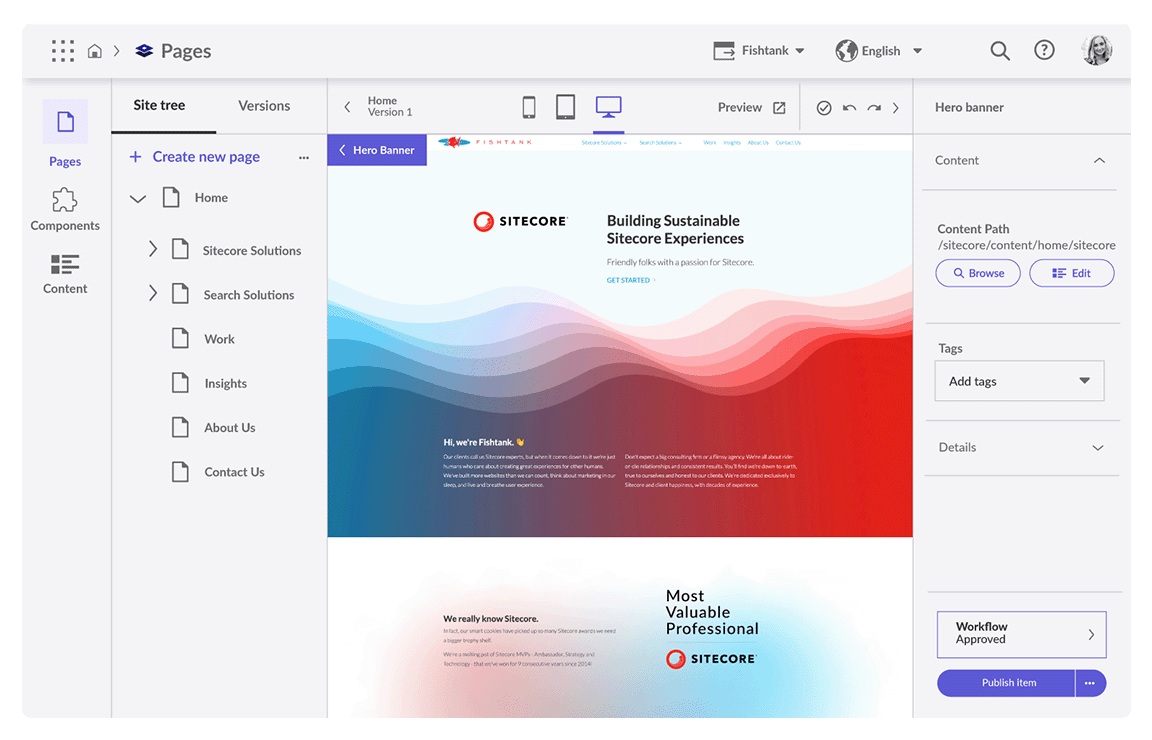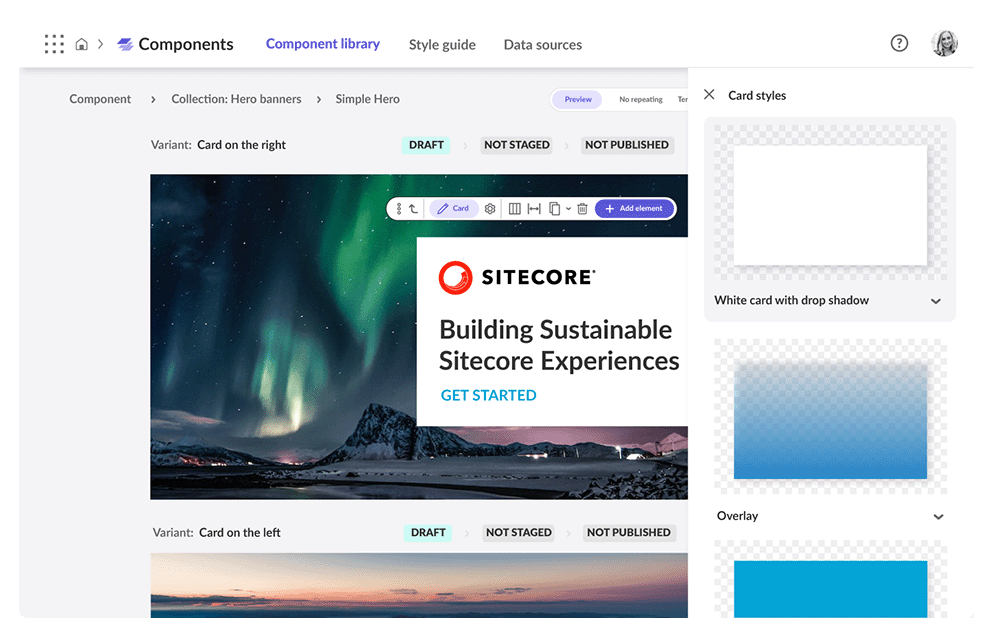Comparing Sitecore XM & Sitecore XM Cloud
Sitecore recently released Sitecore XM Cloud, a new SaaS offering of Sitecore’s core CMS - Sitecore XM. Sitecore XM Cloud is the first fully cloud native CMS, and comes with some really nifty features.
In this article we’re going to explore the differences between Sitecore XM Cloud and Sitecore XM.
If you’d like to learn the differences between Sitecore XM and Sitecore XP, click here to read my previous Sitecore XM vs XP blog. It’s also worth reading since Sitecore XM Cloud is now the natural successor to Sitecore XP.
Sitecore Experience Manager
Sitecore XM is Sitecore’s original CMS offering. With Sitecore XM you can manage and deliver content across multiple websites in multiple languages and locations through a visual drag and drop editing interface. It allows content authors to quickly create and publish content with a WYSIWYG or content data tree, using out of the box, reusable layouts and pre-built components. Sitecore XM also features personalization abilities and a form builder.
Sitecore XM Cloud
Sitecore XM Cloud is Sitecore’s latest CMS offering and an industry innovator. It’s the most expansive, composable, end-to-end SaaS enabled CMS available on the market. XM Cloud takes the proven features of Sitecore XM and repackages them as a native SaaS, native cloud solution with new, more modern and innovative features.
Core Differences Between Sitecore XM Cloud & Sitecore XM
SaaS vs Non-SaaS
As the name suggests, XM Cloud is a cloud native SaaS, while XM is PaaS. Being SaaS and cloud native means that XM Cloud is developed, designed and deployed as a cloud-native app built with a composable architecture, centrally hosted and licensed using a subscription model. This means XM Cloud will have reduced hosting and infrastructure costs, while also being built and developed for speed and scalability, as well as being able to do away with upgrades. Yes you read that right, it’ll be the last upgrade you ever do. Sitecore XM Cloud takes the headache of scaling, SLAs and uptime off your plate.
XM on the other hand is part of Sitecore’s PaaS portfolio on Azure Managed Cloud. It can also be managed on premise with a cloud provider or have a mixture of both fully managed and in the cloud.
Jamstack Ready vs MVC
Sitecore XM Cloud is Jamstack ready. Jamstack is a modern architecture that allows Sitecore to deploy content in more flexible ways, using more modern architectures and JavaScript frameworks, as well as allowing the acceleration of content using CDNs. Pages can be pre-rendered at build time using Static Site Generation. This means more optimized operational costs, ultra fast performance and faster time to market among other great benefits.
Sitecore XM on the other hand powers dynamic content delivery using ASP.NET MVC. This means that developers don’t have the freedom and flexibility to use open tools with static site generation capabilities and instead need to use the proprietary presentation framework from Sitecore. This means that achieving great performance and an impressive TTFB is very difficult. Infrastructure costs are higher, especially when you need to scale up to meet more traffic demands or a global audience.
Sitecore Pages vs Sitecore Experience Editor & Content Editor
One of the most impactful things about XM Cloud is that Sitecore’s introducing a completely new visual authoring paradigm called Sitecore Pages, which will replace Experience Editor and Content Editor. It allows users to manage sites in a really visual way, something you can’t do in XM today. The retooled page authoring environment is based on Sitecore’s learnings from Horizon, and allows users to drag and drop and build content and experiences really simply while working natively with headless capabilities. Sitecore XM Cloud will also feature a new and groundbreaking component authoring suite that works natively with Pages and redefines the authoring experience.
Sitecore XM uses Content Editor and Experience Editor for managing site content. Sitecore Experience Editor is a WYSIWYG editor that allows you to manage page items and components on the page as they would appear when they’re published. Sitecore Content Editor is the non-WYSIWYG editing tool, which features a content tree that has all the items that are created in your instance, as well as an HTML editor and content editor for all components.
Fast Time To Launch Vs Longer Time To Launch
With XM Cloud you can get up and running with a templated site in less than 5 minutes, and for a full production site the timeline to do that is also dramatically shortened, from months to weeks with a simple site.
With Sitecore XM the time to launch is substantially longer, with a typical site taking much longer to be built than just a couple of weeks.
Wrap Up
Sitecore XM Cloud really is the no-compromise CMS offering both developer and marketer agility. It empowers marketers to build and design the front-end experience and provide their audiences with a world class user experience, while also giving developers the freedom to develop on modern frameworks and headless architecture.
If you're interested in Sitecore XM Cloud, or if you'd like to know more about what the transition to XM Cloud from Sitecore XM or XP looks like, please email us at [email protected].
👋 Hey Sitecore Enthusiasts!
Sign up to our bi-weekly newsletter for a bite-sized curation of valuable insight from the Sitecore community.
What’s in it for you?
- Stay up-to-date with the latest Sitecore news
- New to Sitecore? Learn tips and tricks to help you navigate this powerful tool
- Sitecore pro? Expand your skill set and discover troubleshooting tips
- Browse open careers and opportunities
- Get a chance to be featured in upcoming editions
- Learn our secret handshake
- And more!


